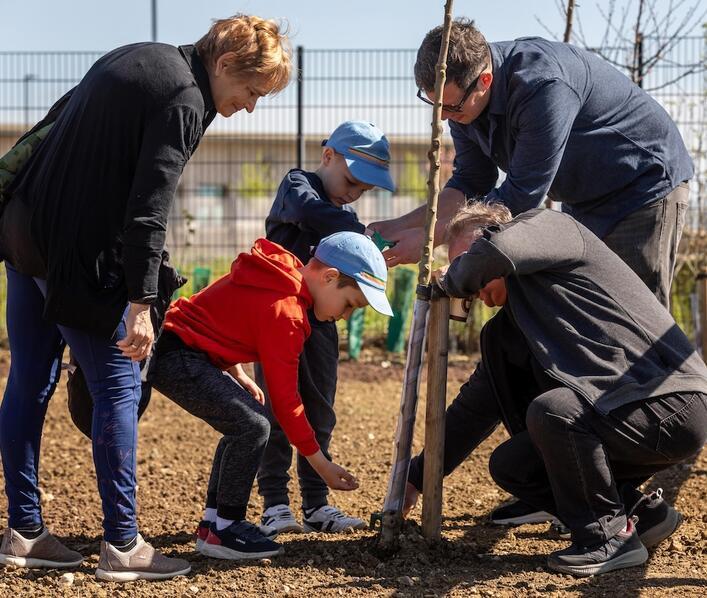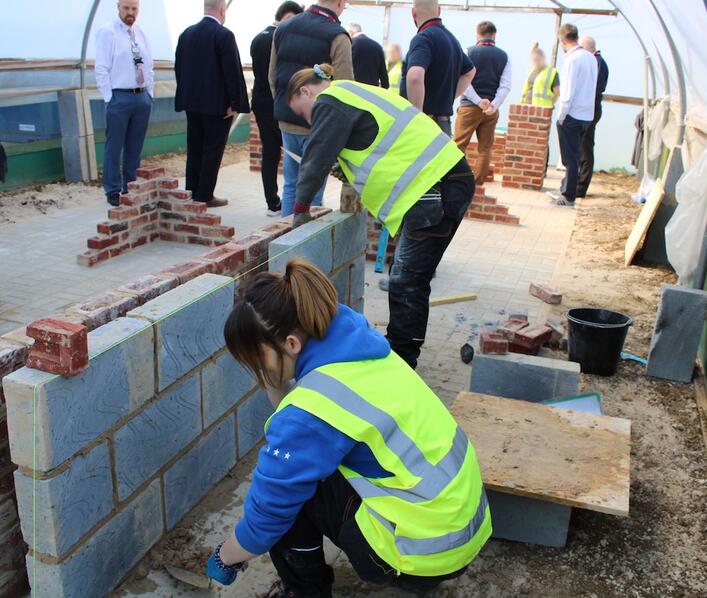Alconbury Weald celebrates World Environment Day
- 05.06.2020

Alconbury Weald is marking World Environment Day on June 5th by celebrating delivery to date and reconfirming its commitment to Doubling Nature and ensuring the development delivers a net gain in biodiversity. The development to date has planted more than 51,130 trees as part of the first tranche of the half a million trees planned for the overall development.
The new community near Huntingdon is transforming a former airfield to deliver 5,000 homes and a new Campus business area, along with schools, community facilities, transport connections and a number of parks, including a new 155 acre Country Park for the area. The development will deliver a Green Infrastructure Strategy: creating woodland and hedgerows through the site to connect with surrounding ancient woodlands such as Monks Wood and Hermitage Wood, and historic field hedgerows further afield; creating large interconnected areas of species rich grassland; and capturing water through an extensive “sustainable urban drainage” system, which will include resident engagement on water efficiency and a number of waterside wildlife habitats.
Each phase of development is underpinned by planning and audits, which seek to deliver a net gain in biodiversity. This will be monitored with the support of the Wildlife Trust, who have worked closely with the Urban&Civic team since the early Vision for Alconbury Weald was developed. Urban&Civic is also part of the Developer’s Forum for Natural Cambridgeshire – the Local Nature Partnership – which looks to share best practice among the development community, including through the Developing with Nature toolkit. The Partnership is working with all partners and communities in the County to double the space for nature in Cambridgeshire and Peterborough from 8% of land use to 16%, which is the national average, but hope to exceed this target!
The first 50,000 newly planted trees at Alconbury Weald will store 170 tonnes of carbon every year and help remove over 1.24 tonnes of airborne pollutants. In addition to that, the trees will help divert 1,630 m³ of storm water runoff each year.
Diversity is also key to this new landscaping, with 81 species of trees now planted, including Field Maple, English Oak, Hawthorn and Hazel. The species and mix have been selected to reflect the local landscape, while ensuring the trees are resilient to climate change and planted in mixes and locations that make them less vulnerable to disease and the impacts of climate change.
Alconbury Weald is home to diverse wildlife, including species of importance for conservation, such as brown hare and song thrush, as well as some more common species, like robin, often found in gardens and parks; and butterflies comma and peacock, the latter known for its striking wing patterns that resemble the tail of a peacock. The development’s biodiversity strategy targets specific species to support with new habitats and regular surveys are carried out to monitor this. Early findings indicate that bats are enjoying the newly created areas around the first phase, with a variety of species recorded including noctule and common pipistrelle. House martins have also been spotted foraging around the new pond/wetland areas and nesting on nearby buildings.
The first phase of development will deliver a 3.7% increase in the biodiversity of the area, and the team continue to work with the landscape team at Bradley Murphy Design and with the Wildlife Trust to increase this to 10% across the development as a whole. The delivery of a net gain in biodiversity through development means there is more natural habitat through and after development than there was before it started, and this is an increasingly important measure of best practice.
It is not just nature benefitting from the development: with temperatures creeping up, the tree canopy will provide important shade and support cooler temperatures for people and nature. The first phase will deliver an astonishing 74.5 hectares of total leaf coverage.
Rebecca Britton, Head of Communities and Partnerships at Urban&Civic, said:
“When you are creating new places at scale you have a unique opportunity and responsibility to ensure you use the land to knit together green corridors and create strategic green spaces alongside “doorstep” open space. These all play their part in the current climate and biodiversity crisis we face, as well as being important for encouraging healthy and active lifestyles for residents. We are pleased with what has been delivered so far, but we have a lot more work to do to bring forward the next larger tranches of green space.
“The great thing for us and our residents is that the work so far is not only benefiting nature but also our residents and businesses on site. The recent Covid-19 lockdown has proved the value of having green space on your doorstep and leisure routes to walk, run and cycle through and we have some keen nature spotters among residents and at the primary school. Our next phase of work will deliver The Glade, which will in time connect up to the main parkland area at the heart of the development, reimagining and repurposing the line of the old runway. Working with a great design team and strong partners to provide steer and challenge helps us keep true to the vision and also ensure our delivery is on track!”
The first phase of Alconbury Weald will ensure 50% of the area is green space and also support healthy living with over 1500m2 of orchards and 1700m2 of allotments. Some of these will form part of a linear park, currently in delivery, which creates a safe walking and scooting to school route for residents.
Martin Baker, Conservation Manager for The Wildlife Trust for Bedfordshire, Cambridgeshire & Northamptonshire, and a member of the Natural Cambridgeshire Board, said:
“While Covid-19 has in recent weeks overshadowed the climate and biodiversity crisis this country faces, it has also reinforced the importance of nature and accessible green space for people’s health and wellbeing as well as for nature. It is vitally important we continue to work with developers like Urban&Civic to ensure new developments coming forward play their part in delivering more space for nature and more biodiversity.
“Alongside World Environment Day, we are also running our 30 Days Wild campaign throughout June to remind people they can do one thing each day to help nature.”
To find out more about the Doubling Nature campaign and Natural Cambridgeshire please visit www.naturalcambridgeshire.org.uk. To find out about the 30 Days Wild Campaign please visit www.wildlifetrusts.org.






